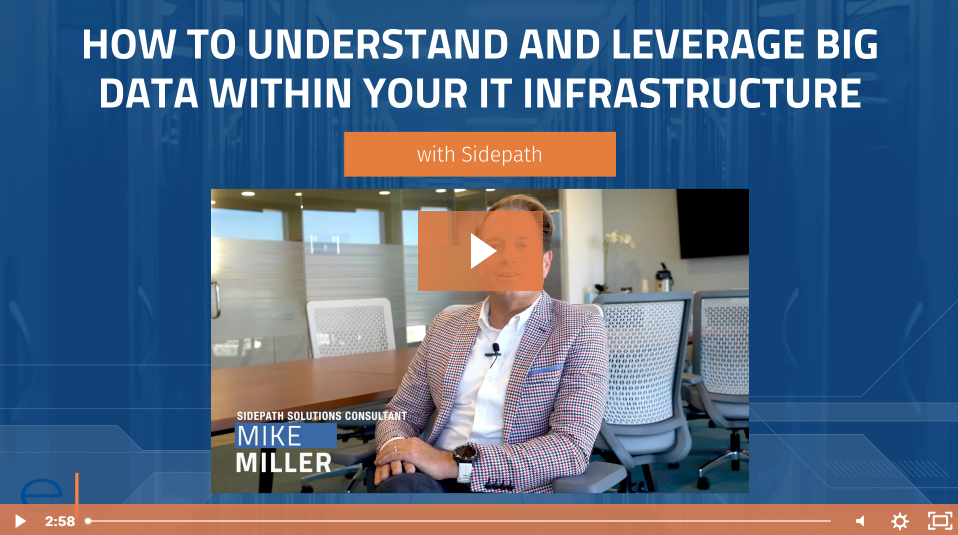February 24
Data is gold and the hills are rich with it; but one recent study found that 99.5% of collected data is never analyzed or used.
Today’s organizations gather a wealth of data across different platforms. This information offers endless insights and possibilities for organizations that can properly harness and analyze it. By analyzing “big data,” organizations are able to identify real-world trends based on their exact customer base. This allows smart businesses to shift products, services, and solutions to meet verifiable customer demand. Organizations that are already using big data to drive business decisions are seeing an 8-10% profit increase.
The key is being able to gather this disparate data in a way that allows you to holistically analyze the information. Mike Miller, a Sidepath Solutions Consultant, covers some of the challenges companies face when dealing with big data and how they can get the most out of the information they already have.
Who Can Benefit from Big Data
Just about every company across industries collects some form of data. Whether it’s as simple as shop inventory and point-of-sale data or as complicated as healthcare providers tracking service and demographic trends, data is everywhere in business now. As such, any business can benefit from the “big data” trend. It’s simply a matter of centralizing your data into a single source and having the tools to mine it for useful insights.
The majority of data comes from your existing (or prospective) customers, so it’s some of the most insightful and valuable information any organization can access. Diving deep into this data lets businesses make smarter decisions based on the real actions, interests, and behaviors of their real customers. This can guide service offerings, staffing, new product launches, and so much more.
Challenges of Big Data
The biggest challenge of big data is accessing it all and deriving useful insights from the information. In many cases, data is spread across several systems. From different touchpoint platforms (CRM, POS, EPR, marketing automation platforms, etc.) to different storage locations (public storage, edge storage, cloud deployments, etc.), your data is spread out. Unfortunately, it makes the most sense and is most useful when you can look at all the data together. Once it’s all centralized, you need smart tools to help identify important trends and insights. AI is playing an important role in the analysis of big data and will likely become a key component of successful big data analytics programs.
As the famous quote goes, “with great power comes great responsibility.” So another challenge of using big data is understanding what you want to achieve by mining this information, who’s responsible for actually analyzing the data, and who is responsible for making business decisions based on this data. You may find that your organization needs additional dedicated employees or a new team solely dedicated to big data. Whether you have a dedicated big data team or not, you’ll at the very least need a business process that defines how this data is used and who’s involved in decision making.
Getting Started with Big Data
Before you make any moves toward harnessing big data, you need to understand your end goal. Unless you already have big data solutions or tools in place, getting the most out of your data will likely require some new investments. Before you commit the budget and time, be sure you have an anticipated outcome and that the outcome positively aligns with business goals. Possible big data goals may include:
- Modeling and forecasting trends
- Identifying new business growth opportunities
- Isolating waste or underperforming areas
- Analyzing the ROI of current investments
- Making faster decisions about the success of new programs
The first step toward big data analytics is to understand what you have and where it lives. Try to answer these questions:
- What data-collecting systems do you currently use?
- Where does data from those systems live?
Once you have a good understanding of your current data state, you can move onto how to access all that information in a useful manner. Questions to help you achieve this step include:
- How do you access data from each system and location?
- How can you centralize that data?
- What tools do you have (or need) in order to mine the data for insights?
Big data analytics is a big undertaking, but it holds a lot of promise and gives organizations the ability to make true data-driven decisions. Don’t let your data go to waste.




